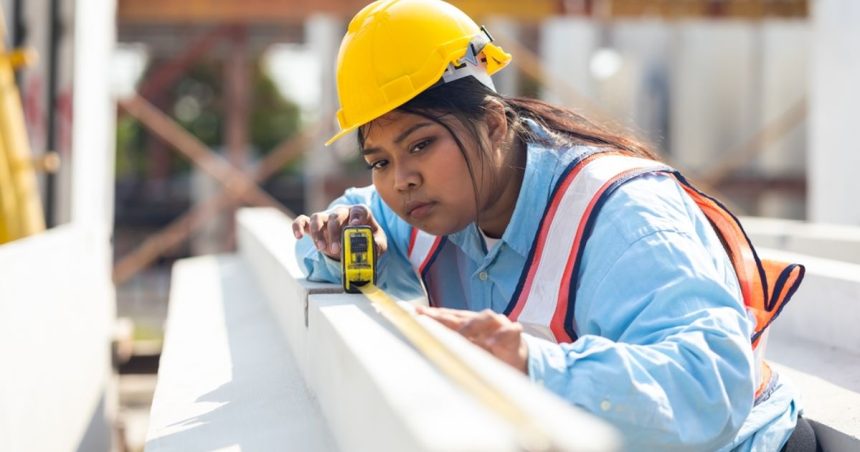A new initiative is looking to poach women from their current jobs for careers in construction in an attempt to plug up the ongoing worker shortages.
Headed up by the Australian Constructors Association (ACA) and backed by the NSW Government’s Women in Construction Industry Innovation Program, the aptly named ‘Attract Initiative” will be flooding your social media feed in the coming months with a public awareness campaign showcasing the life of a woman in trades.
But the Association is adamant this rollout is more than just another ad for inclusion in construction, with the campaign supposedly allowing women to walk a day in the life of a tradie on the job through an interactive web-based portal.
Through this website, women will be able to access videos and virtually journey through a real-world work site, getting a firsthand feel for what a career in the industry would look like for them.
Initiative developer and Chief Strategy Officer at John Holland Jayne Whitney said this virtual industry tour could be the key to breaking down the stigma around women entering into the male-dominated industry and gives companies a chance to showcase their evolving work culture.
“As women, we often hesitate to apply for roles unless we have direct experience,” said Ms Whitney.
“We want women to know that construction welcomes them and that their experience in other fields is valuable. There’s a role for everyone in this industry.”
Construction remains Australia’s most male-dominated industry, with women making up a paltry 12 per cent of the workforce and less than 2 per cent of on-site roles.
“We are confident that once women see our sites and the scale of our work, they’ll be inspired by the important role construction plays in shaping our world,” continued Ms Whitney.
“The opportunities to progress are endless, and few careers offer the same potential.”
Changing the construction culture
While the initiative’s main goal seems to be onboarding some extra hands to plug up the ongoing worker shortage plaguing construction projects, ACA CEO Jon Davies added that the campaign could be the key to finally breaking down the industry’s ‘macho’ culture.
“While it’s essential to engage school leavers, we see a tremendous opportunity in attracting women with life experience,” said Mr Davies.
“Many women don’t realise that the skills they have gained in other industries can easily transfer to construction.
“Bringing these women into our industry can accelerate the cultural shift we desperately need—it’s about more than just gender balance.”
Desperately indeed, if women in the industry like Empowered Women in Trades founder Hacia Atherton are to be believed. Speaking about her own experiences on site earlier this year, she told Build-it that the stereotypical sexist culture many associate with trades was still alive in the job.
“It was only earlier this year that I was walking past an active site just to have someone yell at me ‘Look at that high-vis candy yum yum’,” said Atherton
“Speaking to a trade woman a few weeks ago who was telling me that she was on her knees doing what she had to do, as tradesmen do, when a bunch of guys walked past her and said ‘Come on love get up off your knee it’s smoko time you don’t have to do that yet’.”
“It’s constantly there in the industry, all the way up to actual physical harassment, like physical harassment when women have been up on ladders and men have come up on the stairs clearly trapped and can’t get any way there.”
And Hacia’s experiences sadly aren’t isolated incidents, with a report by the NSW government earlier this year revealing that 71 per cent of women who left the industry reportedly experienced discrimination based on their gender and 1 in 2 women experiencing sexual harassment at work.
Despite this, Atherton still encouraged women to seek out a career in construction and applauded the work being done by larger companies to right the scales of worksite culture.
“HR departments and more of those bigger style organisations, they’re doing fantastic work and I think they’re really starting to make some meaningful, significant change,” she told Build-it.
“The industry is those SMEs, those 20 employees and under, or your 30 employees and under, and they’re the ones that I think are really struggling in this space, and they’re the ones where I see a lot more resistance in making this transition.
“And there’s probably not as much pressure necessarily on those smaller organisations.”







